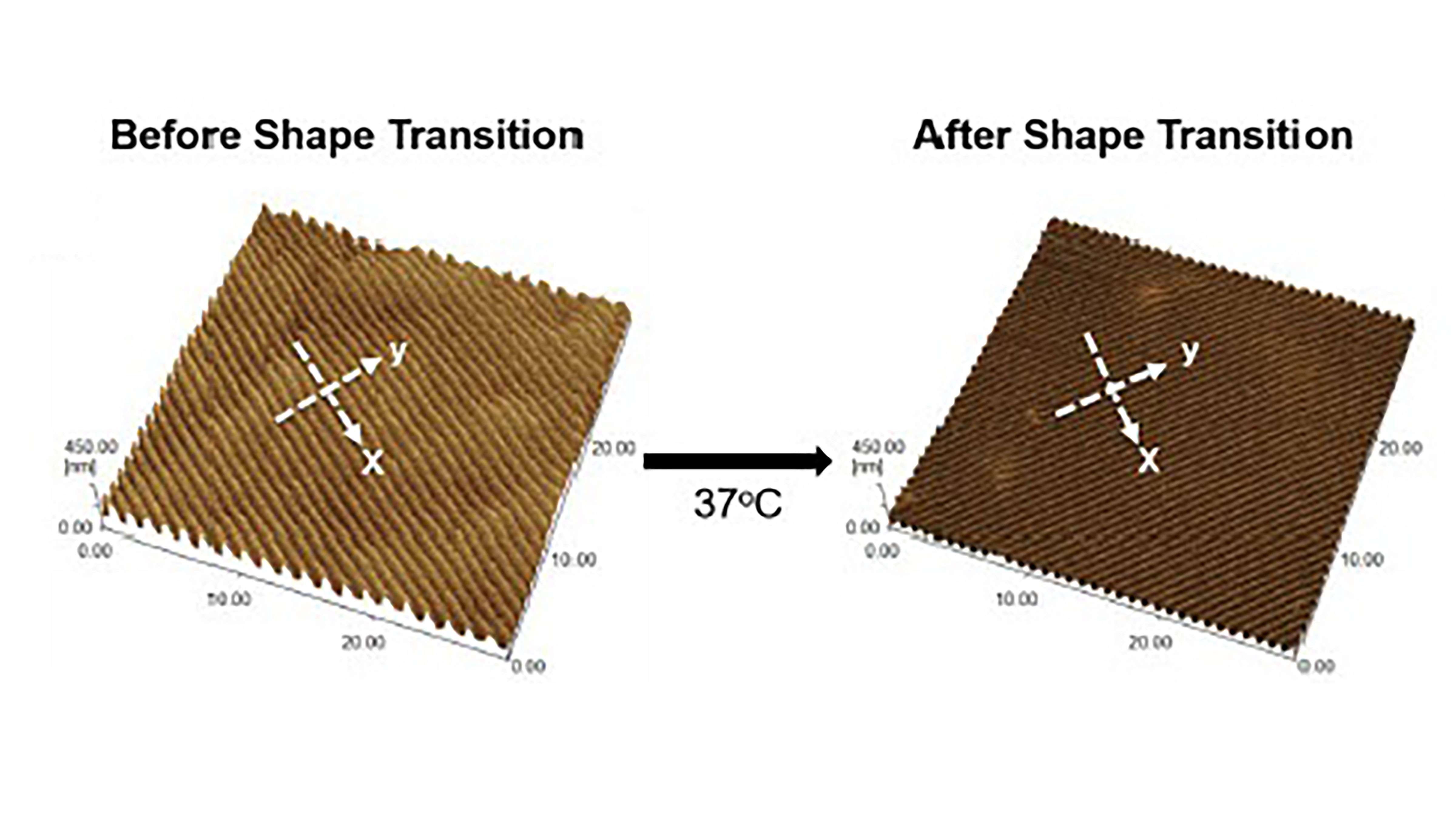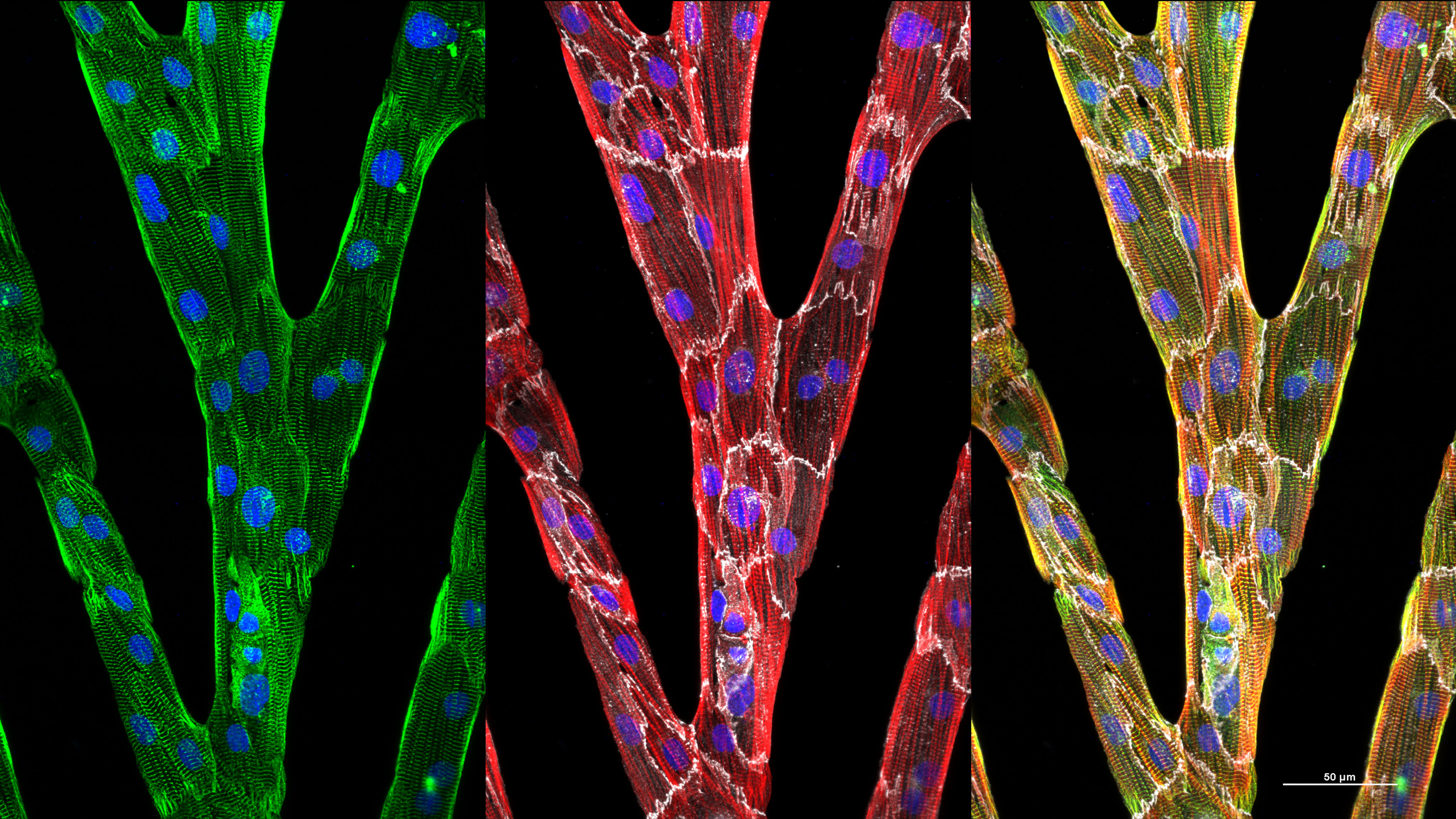Morgridge researchers developed an imaging technique that can predict the efficiency of cardiac muscle cell differentiation from stem cells as a method of quality control for potential regenerative therapies.
Tag: Cardiomyocytes

Using Stimuli-Responsive Biomaterials to Understand Heart Development, Disease
The heart cannot regenerate new tissue, because cardiomyocytes, or heart muscle cells, do not divide after birth. However, researchers have now developed a shape memory polymer to grow cardiomyocytes. Raising the material’s temperature turned the polymer’s flat surface into nanowrinkles, which promoted cardiomyocyte alignment. The research is part of the growing field of mechanobiology, which investigates how physical forces between cells and changes in their mechanical properties contribute to development, cell differentiation, physiology, and disease.

Image Analysis Technique Provides Better Understanding of Heart Cell Defects
Many patients with heart disease face limited treatment options. Fortunately, stem cell biology has enabled researchers to produce large numbers of cardiomyocytes, which may be used in advanced drug screens and cell-based therapies. However, current image analysis techniques don’t allow researchers to analyze heterogeneous, multidirectional, striated myofibrils typical of immature cells. In the Journal of Applied Physics, researchers showcase an algorithm that combines gradient methods with fast Fourier transforms to quantify myofibril structures in heart cells with considerable accuracy.
Read-Across of Chemical Hepatotoxicants; Exposure-Based Cholinergic Synaptic Functional Deficits; and More Featured in April 2020 Toxicological Sciences
The April 2020 issue of the Society of Toxicology’s official journal, Toxicological Sciences, features leading research in toxicology, including several manuscripts covering emerging technologies, methods, and models.
Mechanisms of Chronic Fialuridine Hepatotoxicity; Comparison of Models for Predicting Cardiotoxicity in Humans; and More Featured in October 2019 Toxicological Sciences
Papers on the epigenetic changes to mouse livers induced by a specific ligand and prenatal dexamethasone exposure-induced alterations in neurobehavior in female rat offspring are featured in latest issue of Toxicological Sciences.